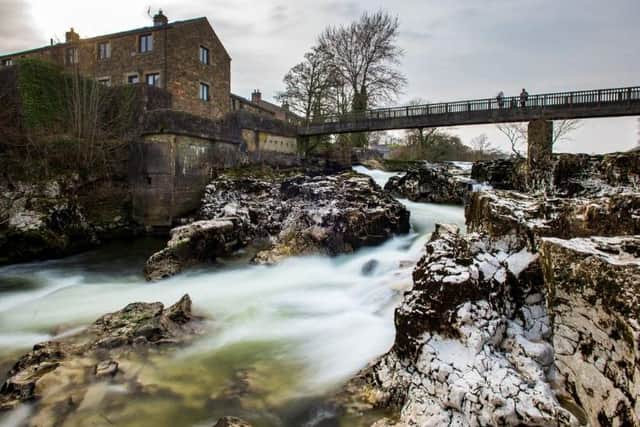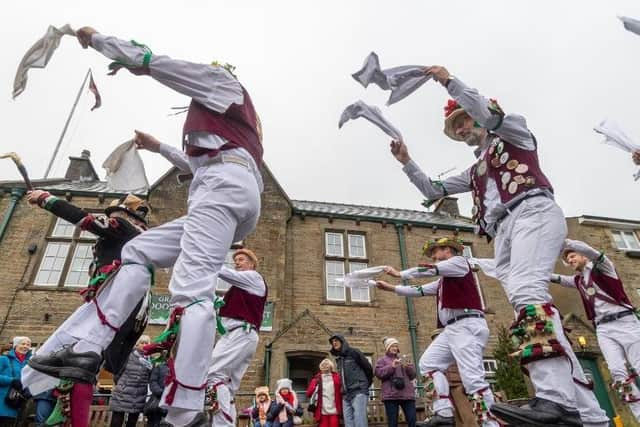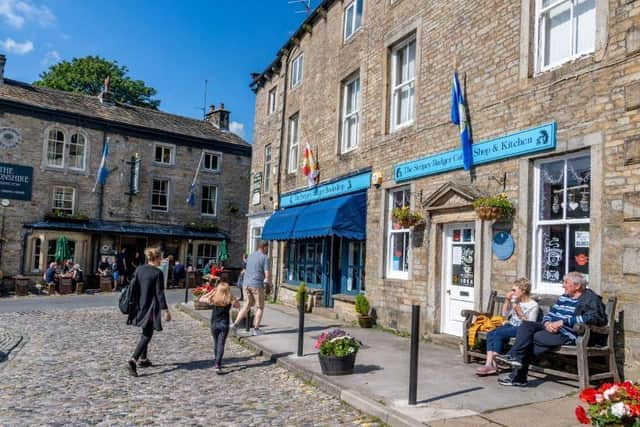How the Romans, All Creatures Great and Small and festivals left their mark on Grassington in the Yorkshire Dales
The popular image of the Roman occupation of England is that the legions came, they saw, they conquered, and they built a few forts. They stomped around a bit on roads which they built in straight lines, set up a handful of towns, and went back home after four or five centuries.
Yorkshire’s Romans are synonymous with creating communities at river crossings (York and Doncaster are fine examples) leaving behind a lot of earthenware, a fair few coins and the odd artefact, some fine mosaics, and the remains of an imposing lighthouse at Filey.
Advertisement
Hide AdAdvertisement
Hide AdWe forget that, quite apart from all the military comings and goings, there was another side to their occupancy – agriculture. Long before Napoleon espoused the importance of food for his men – “an army marches on its stomach” – the Romans were ahead of the game.


They understood the importance of having a home-based farming industry, and there’s no better example of this than the land that surrounds Grassington, which was once worked intensively by the Romans as a significant grain-growing area.
Upper Wharfedale first saw our Roman ancestors in around 50 or 55 AD, in a force led by Gnaeus Julius Agricola. He was a remarkable man; a general, a politician, and a Proconsul. He was made consul and governor of the British province in AD 77, and he founded a sizable military base at Ilkley. From here, roads snaked to other large centres and through fields towards Grassington.
They also mined lead, at Greenhow and Scar Street, and historians claim that today’s Water Street is part of a Roman road. There were also plenty of villas around here, although not as we rather romantically picture them, as quasi-palaces with rich occupants lounging around requesting that grapes should be peeled for them without delay. They were far more like robust farmhouses, where the Romano-British landowners could keep an eye on their crops.
Advertisement
Hide AdAdvertisement
Hide AdGrassington seems to have developed properly from the 7th century, and its name is derived from the combination of the words ‘Gaersing’ and ‘tun’, the first of which means ‘good grazing land’ and the second, ‘little village’. It was also variously spelled as Garsington or Gersington.


It may have been a compact community – it remains so to this day, with well under 1,200 folk at the last census – but because of all that farming, it was strategically important when you had to feed an army.
Like the Romans before him, Edward I ventured to the North of England many times and he, too, realised that Grassington was a good place to pick up vital supplies. So he gave it a Royal Charter to hold a fair and a market in 1282, making it one of the first places to be granted that privilege, and also one of the smallest.
The village had, overnight, become a ‘market town’. The market was held regularly until around 1860, when it slowly waned, and the town’s central square remains an attractive spot and features prominently in the hugely popular revival of All Creatures Great and Small.
Advertisement
Hide AdAdvertisement
Hide AdAmong many other period pieces, the square boasts a highly photogenic, green-painted water pump.


Grassington (which was transformed into the fictional Darrowby for TV) is ready and waiting for the arrival of the many fans of the new series, which is due to start filming this year.
The programme instantly became Channel 5’s biggest-rating drama. Indeed, only a few days back, the producers were advertising for extras to flesh out (literally) the backgrounds of further filmed sequences. Among the qualifications required (for men) were relatively short hair, and “no visible tattoos”.
Since one of the most popular annual events in the town is the September 1940s themed weekend, there should be no shortage of applicants. The producers of the series were delighted at their welcome – and at the variety of the locations that they could use.
Advertisement
Hide AdAdvertisement
Hide AdThe surrounding countryside may be stunning, but what makes it such an appealing location for TV and film crews is the heritage of the place. Sam West (who plays Siegfried Farnon) called Grassington “the tiny town with the biggest heart”.
Grassington has proven adept at promoting itself. And one of the biggest successes of the last few decades has been the annual Dickensian Festival, which pops up just before Christmas. Perhaps there’s something in the water here that makes folk want to dress up in period costumes for a few days.
There are jugglers, buskers, chestnut sellers, stalls selling all kinds of gifts and produce and the atmosphere is one of relaxed enjoyment. The band plays all the familiar carols, and Punch gets his rightful comeuppance at the Punch and Judy show. It’s generally spread over the first two weekends of December, and folk flock from near and far. It involves all sorts of groups and organisations, schools, sports teams, you name it, everyone wants to get involved.
Centuries back, we would have been in the heart of the English lead mining and quarrying industries. Nearby Yarnbury Lead Mine – a magnet for walkers and those interested in our rich industrial past – is believed to have been worked from around 1200, and for several centuries afterwards. Historians believe that the lead was used for the roofs at Windsor Castle, St Peter’s in Rome, and even in Jerusalem.
Advertisement
Hide AdAdvertisement
Hide AdHowever, nothing stands still and the town has rolled with the times, embracing the fact it is now a magnet for the lucrative tourist trade. The annual Grassington Festival (another popular celebration) will hopefully return this summer when restrictions are lifted, with a vibrant mix of dance, live music, theatre, recitals and talks.
The site of the railway station is now built over, and the line to Skipton vanished many years back, but there is an active campaign to relay it, and to reinstate passenger traffic.
For such a compact place, Grassington has a lot to offer. There are numerous independent, family-run shops and businesses, a fascinating little folk museum, run by dedicated volunteers, and the town is an ideal base from which to explore the more remote pockets of the glorious Dales countryside.
It is the remarkable people of Grassington and its neighbours who maintain the Upper Wharfedale Fell Rescue Association, which for more than 70 years has been rescuing people and animals from the caves, mineshafts, fells and crags of Wharfedale, Nidderdale, Littondale and beyond.
Advertisement
Hide AdAdvertisement
Hide AdAnd there can’t be many Yorkshire communities that get some of their electricity supply from their own hydro-electric system.
A visitor writing an online review of the town might be tempted to call it a “hidden gem”, and they would at least be half right, for Grassington is certainly a gem of a place.